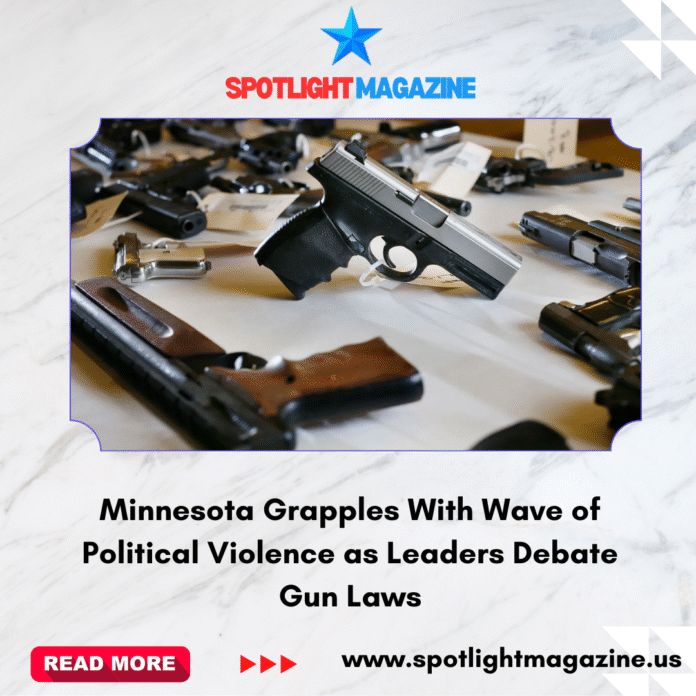The shooting of conservative activist Charlie Kirk has added to a series of violent events that have left Minnesotans shaken and reignited urgent debates over gun violence and public safety. In response, Governor Tim Walz is preparing to call a special session of the state legislature to address the crisis, a move he had planned even before Kirk’s death.
The state has faced a grim year marked by shocking attacks on public officials and communities. In June, former House Speaker Melissa Hortman and her husband Mark were assassinated in their home. Around the same time, Senator John Hoffman and his wife Yvette barely survived a violent assault. Then, in late August, a deadly shooting at Annunciation added to the sense of fear and instability.
Hortman’s death left a major void in state politics. Minnesota House Democrats recently selected Representative Zack Stephenson of Coon Rapids to succeed her as their leader. Stephenson, a close friend of Hortman who served as a pallbearer at her funeral, has been outspoken about the urgent need for change. He believes Minnesotans are demanding real action to prevent more tragedies.
“I think if folks are listening to the families of the victims, if they’re listening to their communities, if they’re listening to the state, then we’ll see meaningful action to decrease gun violence in Minnesota,” Stephenson said.
But even as the pressure builds, lawmakers remain divided over solutions. Privately, some legislators admit there aren’t enough votes in the statehouse to pass sweeping bans on weapons or ammunition. Republicans have instead focused on adding more school resource officers and expanding mental health facilities. GOP House Speaker Lisa Demuth said her party is committed to tackling the root causes of violence, pointing out that she has consistently supported funding for school safety measures over the past several years.
Democrats, however, want to strengthen Minnesota’s red flag law, which allows courts to temporarily take away guns from people deemed a danger to themselves or others. They argue the law is already saving lives and could be even more effective with improvements. State court records show that in 2024, 135 extreme risk protection orders were filed, most by law enforcement officers. Ninety-five percent were granted.
“It is a law that is working, that’s saving lives today,” Stephenson emphasized.
Still, critics argue the current red flag law failed to prevent some of the most high-profile attacks, including those targeting lawmakers and the shooting at Annunciation. That has led to talk of adding tougher requirements for safe gun storage, an area where Democrats and Republicans may be able to find common ground.
As Minnesota mourns the latest wave of violence, the political battle over how to stop it continues. While families grieve and communities search for reassurance, state leaders are preparing for a special session that could define Minnesota’s approach to gun safety for years to come. Governor Walz is not expected to formally announce the timing until after the special election to replace Hortman’s seat, but the urgency of the moment is clear.
What happens in that special session will not only shape policy but could also decide whether Minnesotans begin to feel safer in their schools, neighborhoods, and public spaces—or remain trapped in fear as violence continues to strike at the heart of their state.


